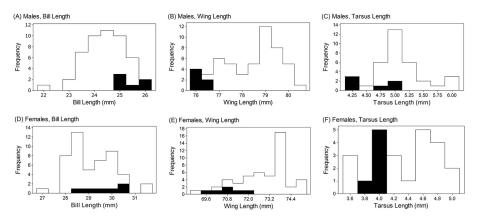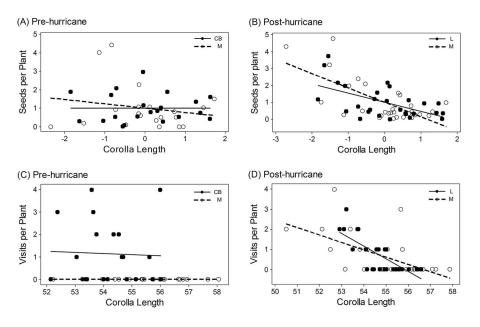“A hurricane alters pollinator relationships and natural selection on an introduced island plant”
Ethan J. Temeles • Gabriella A. Bishop’18
Biotropica, 2019, 51:129-138
On 18 September 2019, Hurricane Maria, a category 5 hurricane with 270 kph winds, struck the island of Dominica, West Indies, the worst natural disaster in the island’s history. Six months after the hurricane, we found that the primary food source of purple-throated carib hummingbirds was Heliconia wagneriana, an introduced plant with extremely long flowers and a low nectar reward. Prior to the hurricane, the only visitor we recorded to this plant were long-billed female purple-throated caribs. After the hurricane, short-billed male purple-throated caribs were the primary visitor to Heliconia wagneriana and exerted strong selection for shorter flowers in this plant. Male purple-throated caribs that survived the hurricane had significantly longer bills than males prior to the hurricane, and survivors of both sexes were considerably smaller in overall size.


